When I decided to go to Kosovo, I looked online for some day trips outside of Pristina. I was planning to be in Kosovo for 5 days so I really wanted to see some of the countryside and places outside of the Capital. I was amazed at how few options were available online and they were extremely expensive. Day trips on GetYourGuide and Viator were €200 plus. Some tours didn’t accept reservations for solo travellers. I was also surprised that several tours started outside of Kosovo with Skopje, in Macedonia, being the most popular starting point.
I decided to wait until I got to Pristina to arrange something. I arrived just after 3pm and after checking into my hotel I walked around the city. Please read my post on my two days in Pristina, which will also give you some background on the history of Kosovo.
There were lots of travel agencies in the city center but I couldn’t find a tourist Information office. I asked my hotel for some advice and they suggested they arrange a private driver for me. Originally I didn’t want to do this as I was concerned about the cost and I also quite liked the idea of going on an organised tour. However, I asked the receptionist to get me a quote and I mentioned a few places I was interested in going to.
The following day I was told a taxi driver was available to take me. He would bring me to four places, I could stay at each one for as long as I wanted and it would cost €150.00 for the day. I was delighted with the price and to hear I could visit several places so I agreed to this. Most of the tours I had seen online brought you to two places.
Day 1
The following morning I met my taxi driver, Ahmed, at 10.00am and off we went. While Ahmed had limited English and I don’t speak Albanian, he was the perfect gentleman and this is how we spent the day:
Ulpiana Antiquity
In less than thirty minutes, we arrived at the Ulpiana Archaeological site. I had read about this previously and knew it is considered one of the most important archeological sites in Kosovo.
I was immediately surprised to see that there wasn’t an entrance gate or a ticket office. Also, there is only a small wire fence around it to protect it. It’s always great to see that the locals and visitors respect an important area.
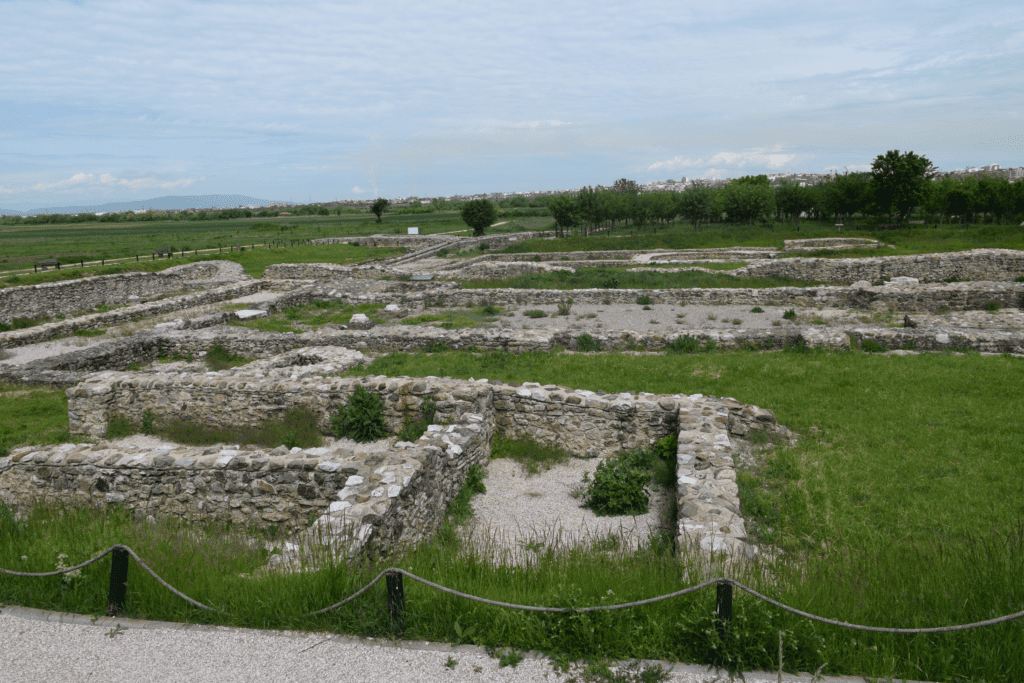
The site is considered to have been an ancient Roman / Byzantine town dating back to the 1st to the 6th century. Ulpina is very close to the center point between Rome and Constantinople, the two strongholds of those empires. The surrounding countryside is fertile land with several mines containing precious minerals so it was considered valuable land.
The ruins now are now located in a very quiet place. There is farmland with greenhouses right beside it and a dog barked extremely aggressively when we arrived. Ahmed and I were the only people there. He told me his children have been here on school tours. It was very peaceful as I wandered around looking at the ruins. There are some very good signs in Albanian and English which explain everything.
Several religious monuments were discovered here along with human remains, artefacts and pieces of military equipment. The ruins are thought to be of the administration center for the town, the bishop’s residence, a baptismal chapel, a public bathroom and a Basilica, with four towers.
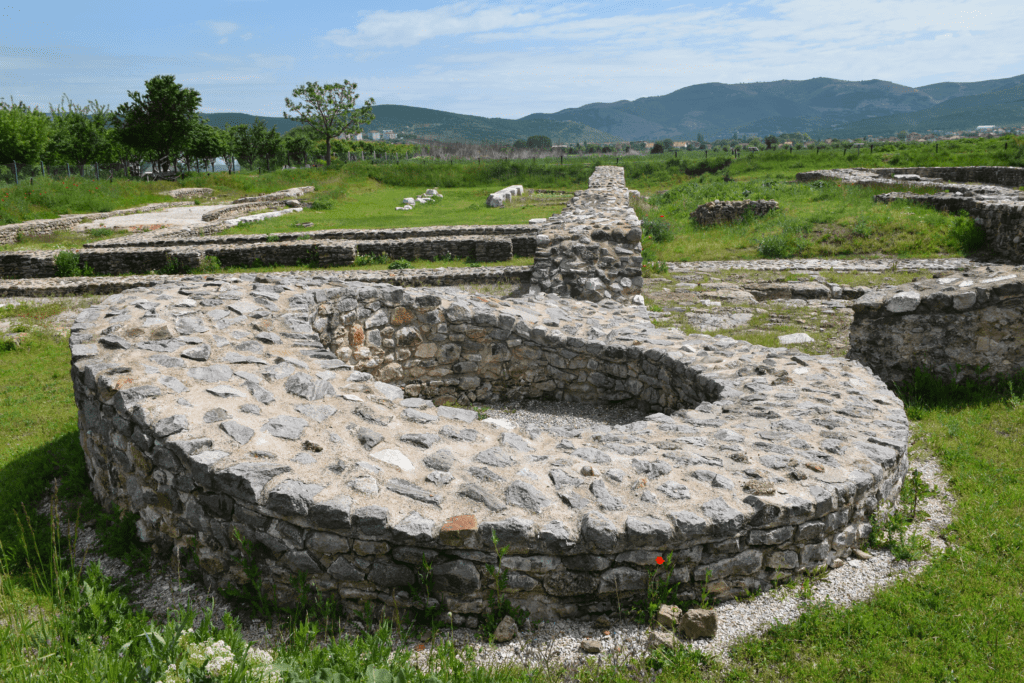
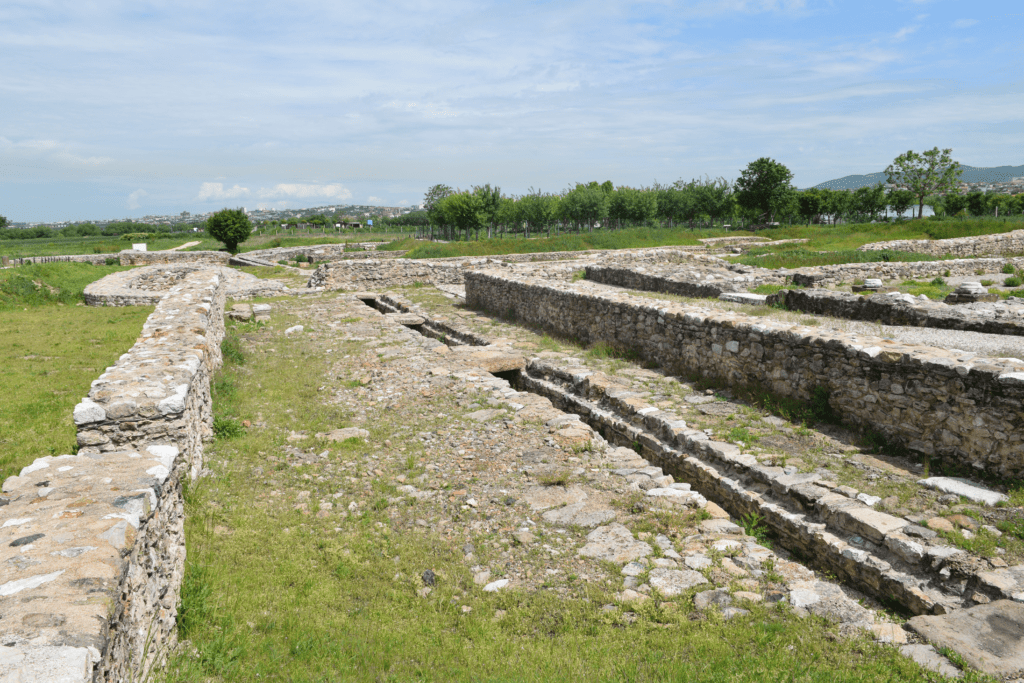
We drove back through the town of Gracanica which has lots of Serbian flags flying. I was quite surprised to see this and while I was trying to figure out how to diplomatically ask about the town Ahmed told me very passionately that he doesn’t mind “The Serbs”.
This was one of many times I was struck by how peacefully these various ethnic groups now live side by side, given their complex recent history.
Gadime Marble Cave
We then drove for approximately 25 km and reached the village of Gadime. This is the site of the Gadime Marble Caves. This was one of the places I really wanted to visit when coming to Kosovo.
Ahmed parked in the parking area and showed me where the ticket office was. As it was so unusual to pay an entrance fee anywhere I was intrigued. I walked up to it and it was closed. I went over to what looked like the entrance to the cave to discover this was locked. Just as I was walking back to my driver, a lady came out of the ticket office and called me back. She spoke to me in Albanian and then in English. She said if I paid the entrance fee, she would find a guide who spoke English. The entrance fee was €2.00 and she said it would take 10 minutes to locate a guide.
I sat and waited and in a few minutes a gentleman arrived with a large key. I was then taken on an extremely interesting private tour of the cave lasting about 45 minutes.
The cave was discovered by a local construction company owner, Mr Ahmet Asllani, in 1966. It is made of limestone and marble.
Inside the cave is an amazing array of crystallized stalagmites, stalactites and aragonites. They are thought to have formed over millions of years. There are lots of very unusual shapes which the guide very passionately pointed out to me. With an “extremely imaginative eye” some shapes looked like an elephant’s trunk, the map of Kosovo, the map of Albania, the face of Mother Teresa, an eagle, Romeo and Juliette and the Skenderbeg figure. There was also a set of marble pieces which made a melodic tune when lightly tapped.


There is a lake in the cave and the temperature is quite cold, as you would expect. I really enjoyed visiting the cave and my guide’s enthusiasm for it was infectious.

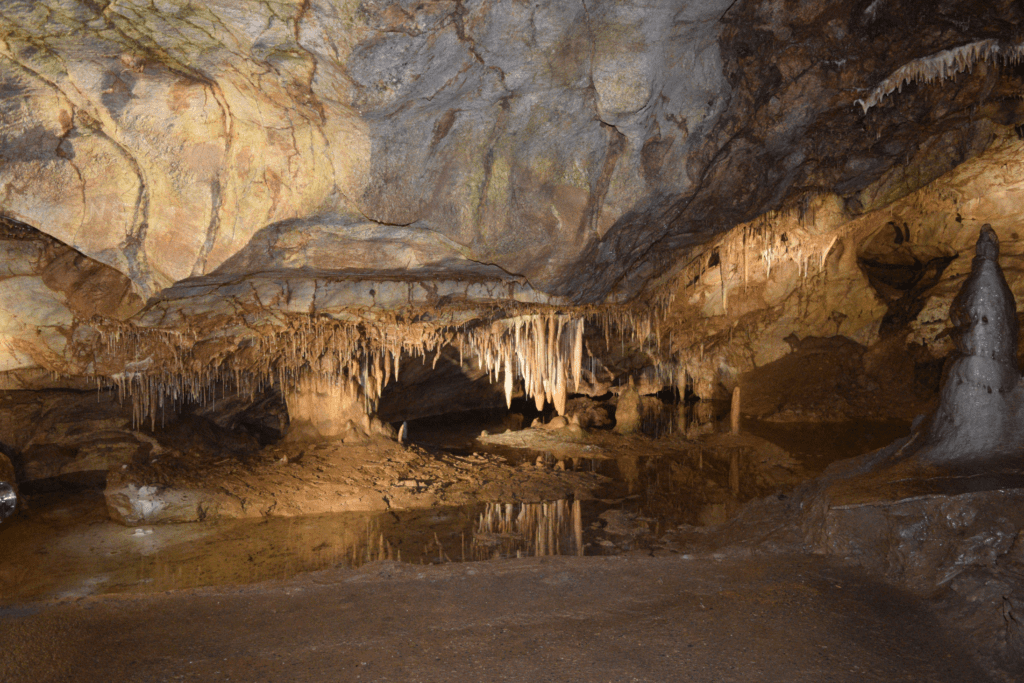
The Prizren Fortress
We then drove to the city of Prizren which is about 85 km south of Pristina. It is close to the Albanian border and a popular place for visitors to visit from Albania. We had taken a bit of a detour for me to see the caves so it wouldn’t be normal to see the caves and Prizren on the same organised tour.
As we approached the city Ahmed told me he preferred Prizren to Pristina. I immediately thought that it looked less cosmopolitan than the capital. People were dressed in more traditional clothes. The streets were extremely busy with people and traffic. Ahmed entered several car parks but everywhere was full. I knew I was to see the castle and fortress here. He kept pointing it out to me and explaining he would get as close as possible.
We then left the town and drove uphill. I then saw the first tour buses I had seen since I arrived in Kosovo. Eventually Ahmed found parking and explained to me it was going to be a long and difficult walk. I like walking and after sitting for so long I was delighted to get some exercise. He also said he would come with me. It took us about 45 minutes to get to the top. We walked along the river, which was very picturesque. Lots of people were sitting outside eating and it did feel more touristy than Pristina. On one site of the river, there was what initially looked like a deserted fair or small theme park. However, this was the scene at the end of it !
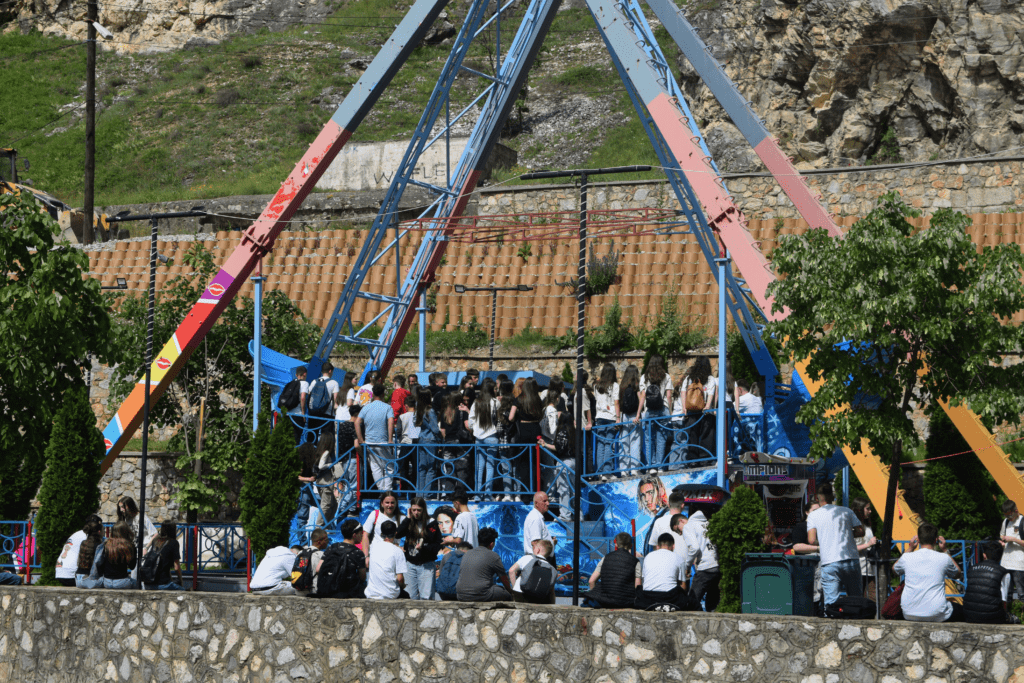
We continued walking uphill and it was extremely hot so we both got a great workout. Ahmed asked several times for directions as we clearly were not going the official route !
We eventually arrived at the top of the hill, which is the site of the Prizren Fortress. This site has been in place since the Bronze Age (2000 BC) and was used to defend the region. It overlooks the Prizren river so geographically was a prime location for the fortress to be constructed when the region was part of the Byzantine Empire. It has been controlled by many different rulers including being part of the Serbian Empire (14th Century) and the Ottoman Empire (15th to 20th Century).
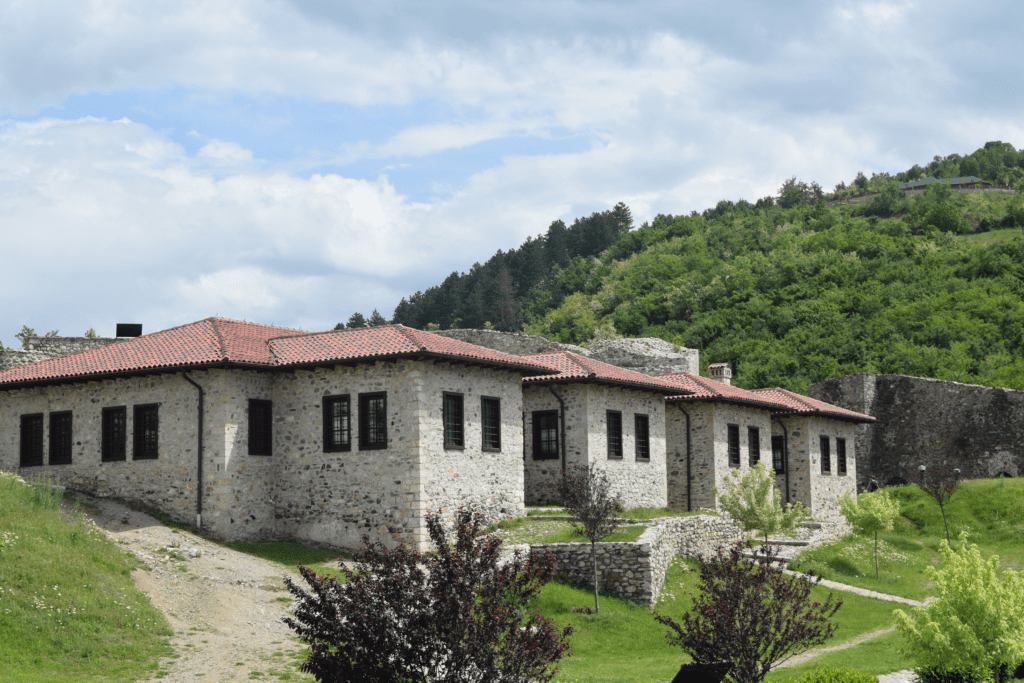

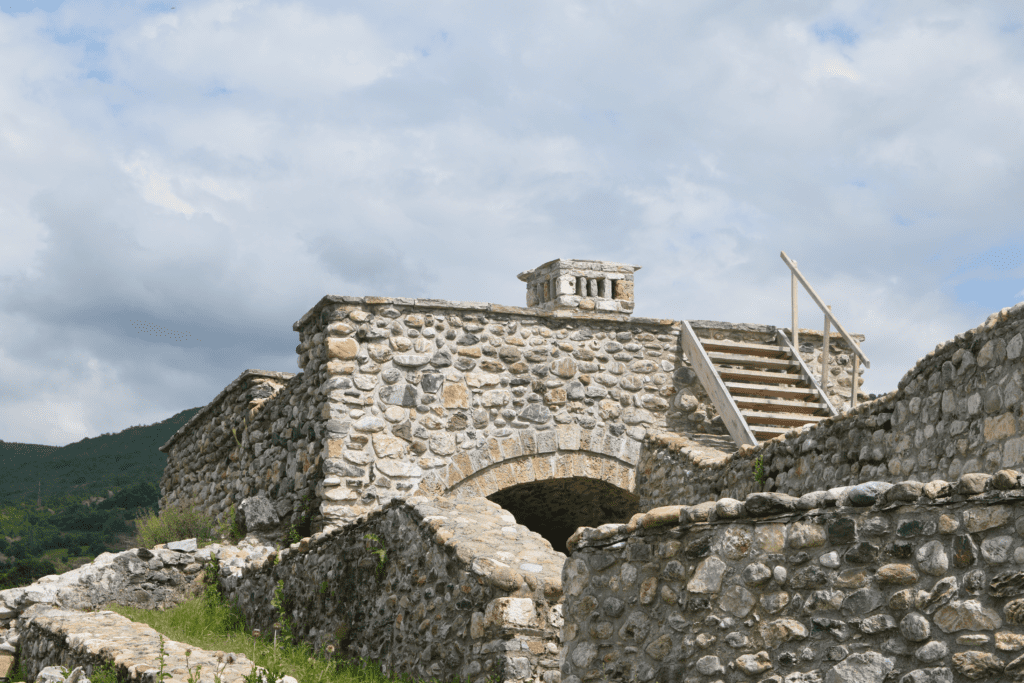
Various archaeological excavations have taken place here in 1969, 2004 and as recently as 2011. A series of stone buildings with corridors, towers and rooms have been preserved. You cannot enter all of them and there is no charge to visit the site. I wandered around for about thirty minutes looking at the various buildings. However, the main reason for going up here is to see the amazing panoramic views of Prizren, the river and the surrounding countryside. It really is breathtaking and on a clear day you can see for miles.
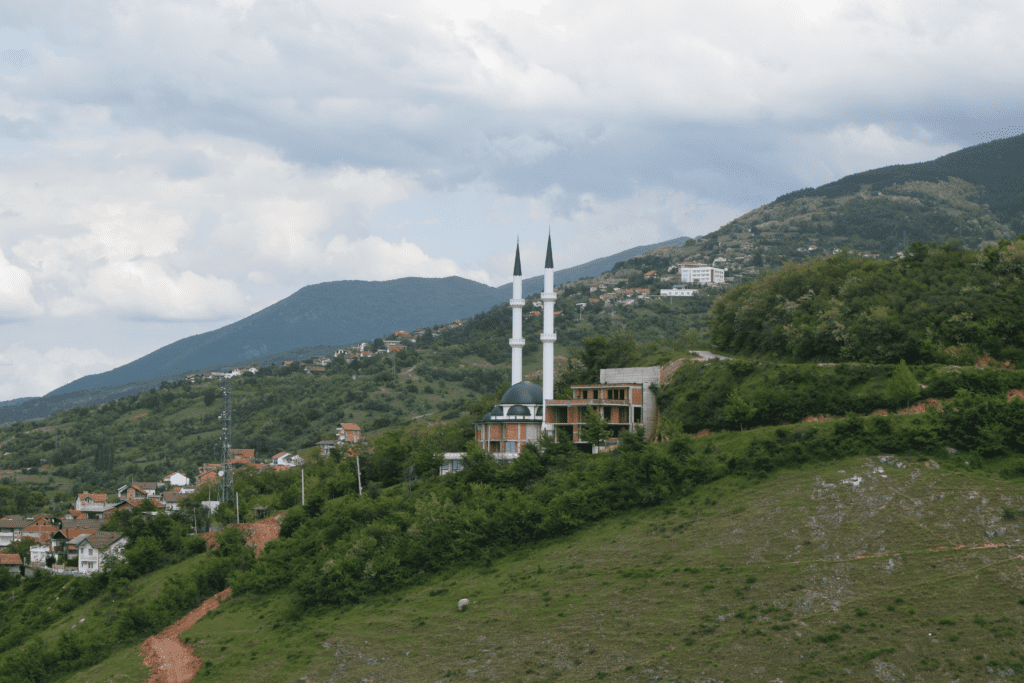


I was really glad I got to visit and while it was a difficult walk, given the heat, I was glad of the exercise after the drive.
Stone Castle Winery
Ahmed told me he had never been to the winery before so wasn’t entirely sure how long it would take to get there. The GPS said it would take about 45 minutes but it took closer to an hour. We left the motorway and travelled through country roads and small villages for quite a while. I was pleased to be able to see more of the countryside.
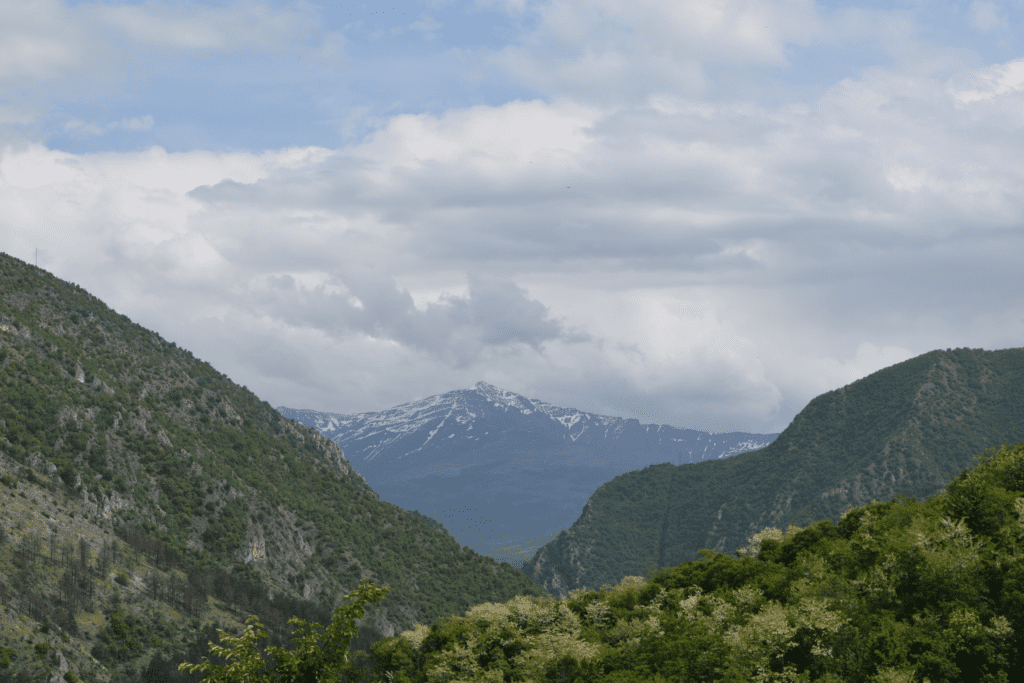
Ahmed had to ask for directors at one stage as the GPS stopped working. When it told us “we had reached our destination” (in Albanian) I could see a large building, which wouldn’t be out of place in a resort but even from a distance it looked unfinished. We drove up to it and there was no activity anywhere. A farmer came from a nearby field and spoke to Ahmed. I could see that he was getting uncomfortable so I immediately knew this wasn’t going to go well ! I got out of the car and started walking around.


Further down the road, I could see some large vats so I showed Ahmed, hoping they contained wine. We got back into the car and drove in their direction. Just before we reached them, we saw a large sign on the building opposite advertising a wine shop. We pulled in, just as another car arrived. I got out of the car but it was clear that the entrance was locked. One of the people in the other car asked me if I spoke English and told me they were looking for a wine tasting venue also.
A few minutes later a very large SUV arrived and two well dressed men got out. They hardly glanced in our direction and approached the door and opened it using a large key. I asked them if I could attend a wine tasting session and one of them abruptly told me that you had to make a reservation (in an American accent). The man in the other car asked if something could be arranged now as they had driven a long distance. I said I had come from Pristina. The gentleman just shrugged his shoulders, saying he was busy and couldn’t help us. I went back to Ahmed, who was on the phone and looked extremely upset. He told me he was calling the number on the sign but no one was answering. He also called the hotel to ask if I had a reservation. While I waited the other people got back into their car and left. Eventually Ahmed apologised to me saying he wasn’t able to speak to anyone. While I was disappointed I told him it didn’t matter and suggested we return to Pristina.
While going wine tasting was one of the things I really wanted to do in Kosovo, I actually really enjoyed the day. The other things I saw were far more unique to Kosovo. I had gotten to see a lot of the countryside and another city. I did try a white and red Stone Castle wine at the airport on my return to Milan. They were of average quality so I hope they have more of a selection if any of my readers get to attend a wine tasting here!
And before anyone asks, I just paid Ahmed the fee we had agreed when we returned. I thought it was a fair price for the day and he really looked after me extremely well.
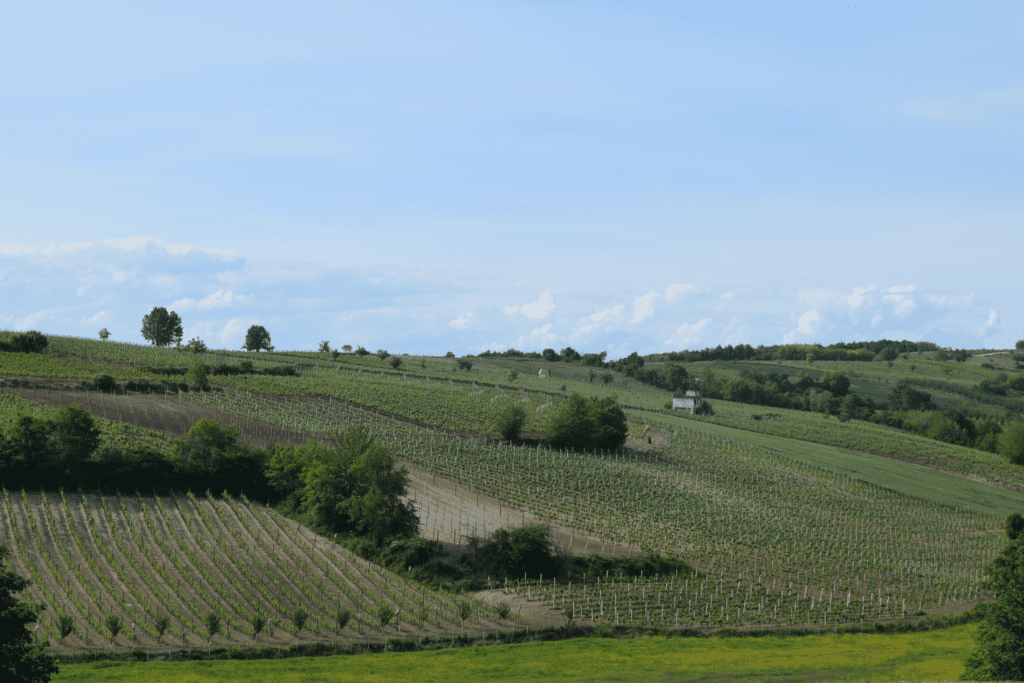
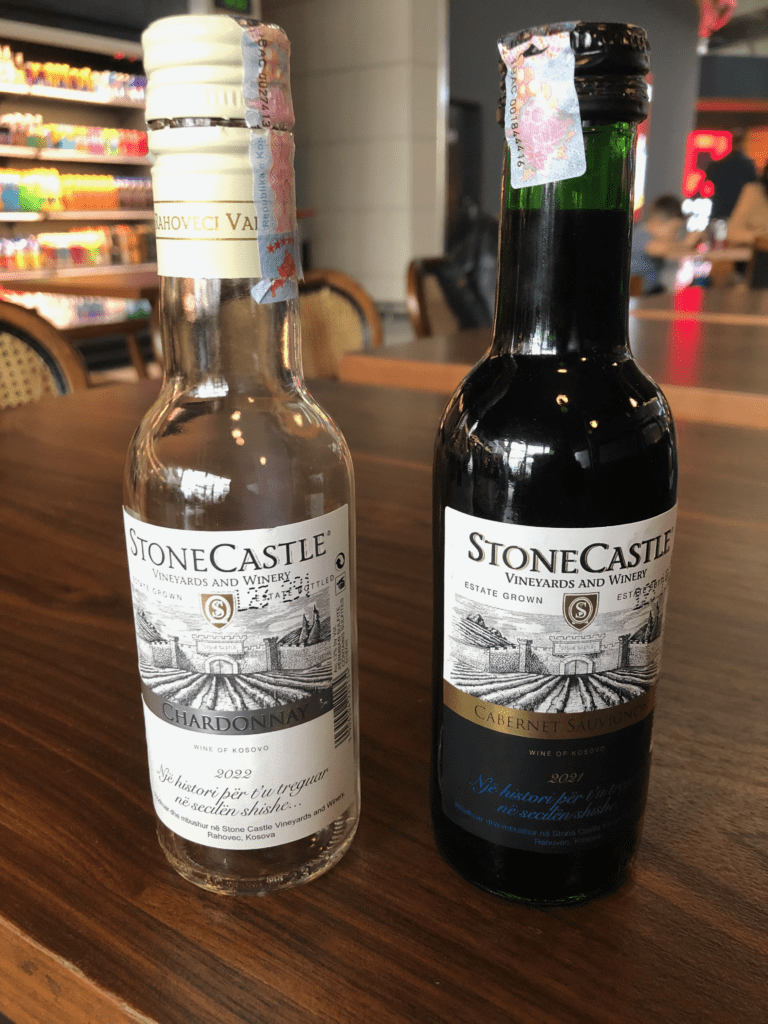
Day 2
I planned to spend the following day in Pristina and was hoping to finally get inside some of the museums. I decided to go to the Museum of Ethnological again. I was there on my first day and it was closed. I had read somewhere online that it opened at 9.30am so I arrived close to that time. However, again the large gate was closed and there was no sign of activity inside. I walked around the perimeter wondering if there was another entrance I hadn’t seen on my previous visit but to no avail. Just as I got back to the gate, I noticed a young man, who was clearly a tourist arriving. I asked him if he knew if it was opening today and he explained he was looking online for a phone number. I suggested we ask in the hotel at the top of the street. They told us it wasn’t opening today but might open tomorrow.
We were both disappointed so started talking about Kosovo. Oscar had arrived in Pristina the previous evening from Tirana in Albania and only had one day in Pristina. He was from Hong Kong, had just graduated as a doctor and was touring the Balkans. I told him a little bit about my previous day and what I had seen so far in Pristina. He was anxious to see inside the Library so we walked down towards it. I mentioned I liked to purchase a guidebook, when travelling, but hadn’t seen one yet. Oscar told me he had seen some at a market stall and said he would show me where it was. We went down and found it and I purchased one. As we walked along, Oscar said he might try and visit something outside of the city and was considering getting a bus. He asked if I had any interest in going to the Gracanica Monastery and sharing a taxi. I agreed immediately and suggested we also go to the Bear Sanctuary, as I thought it was in a similar direction. Oscar agreed.
We went down to a taxi rank and we asked a driver if he would take us to both places, wait for about an hour at each and drive us back. The first driver we spoke to spoke good English. After thinking about this for a few minutes and asking a few clarifying questions, he suggested €50.00 as the price. We were both pleased with this cost so we agreed.
I have met tourists like this when travelling or have agreed to spend time with people on days off on tours. It doesn’t always work out well ! Travelling is a personal experience and you don’t always get on well with a stranger who you happen to meet. However, I had a lovely day with Oscar and throughly enjoyed his company and this is what we did and saw:
The Gracanica Monastery
It took about 25 minutes to arrive at the Gracanica Monastery. I had read about this previously and was delighted to see it. The Orthodox monastery is now a World Unesco Heritage Site. It was built in 1321 by a Serbian King on the site of a 6th century Basilica.
The stone building is very distinctive with five cupolas. The largest one symbolises Jesus Christ and the four smaller ones symbolise the apostles (Matthew, Mark, Luke and John). It is situated in a large park, surrounded by stone walls. There are several small buildings near the entrance including a book shop, public toilets and a shop selling an array of local goods. These include honey, wine, cheese and chocolate. It seemed as if local people shopped here, so it’s certainly worth visiting.


The interior of the monastery is truly splendid and very unique. It’s quite small but has frescoes and paintings everywhere. As I walked around I was able to identify some religious figures. There was a group of tourists inside and a guide was explaining everything in English which was then being translated into a Chinese dialect. I tried to look inconspicuous as there didn’t seem to be any literature anywhere and I was anxious to learn more. However, once the group left, the English speaking guide approached Oscar and I and offered to give us a quick overview of the monastery which we were delighted to have.
The 4,000 plus frescos represent stories and characters in both the Old and New Testaments. He explained that various restoration projects had restored them and he pointed out a small section which had been left in its original condition. That section was almost black which was caused by aging and by the amount of candles which were always lightening near the paintings. The restorers really did an amazing job. He explained that the distinctive gold paint had come from Afghanistan. The guide pointed out some particular scenes to us and also explained the impact on some scenes of the light from the windows, at particular times of the year.
There was no entrance fee to visit the monastery. You could purchase candles to light in a chapel which was near the gate as a donation.

I thoroughly enjoyed this visit and appreciated getting the information from the guide.
Bear Sanctuary
The Bear Sanctuary is about 20 km from the Monastery and we passed Lake Babovc. This is a manmade reservoir and supplies water to Pristina. It really looks extremely natural and picturesque.
The entrance fee to the Sanctuary was €2.50. It houses brown bears who originated in the forests of Kosovo or Albania and were captured illegally. Apparently it was a status symbol to have bears in cages outside restaurants in Kosovo to attract customers. This practice was banned in 2010 and this sanctuary was set up in 2013 by an Austrian company called “Four Paws” along with support of the Ministry of the Environment and the city of Pristina.
Today they have 19 bears which were rescued from restaurants and two cubs which were born here. They have done a great job of creating as natural a habit as possible. It’s about a 2km walk along one side where you can view the bears. There are several lakes and trees in this spacious area. The bears seemed happy as several were frolicking in the small ponds and we saw some being fed by the game keepers. There is also a lion on the property and while we could hear its roar, it unfortunately didn’t come out to see us.

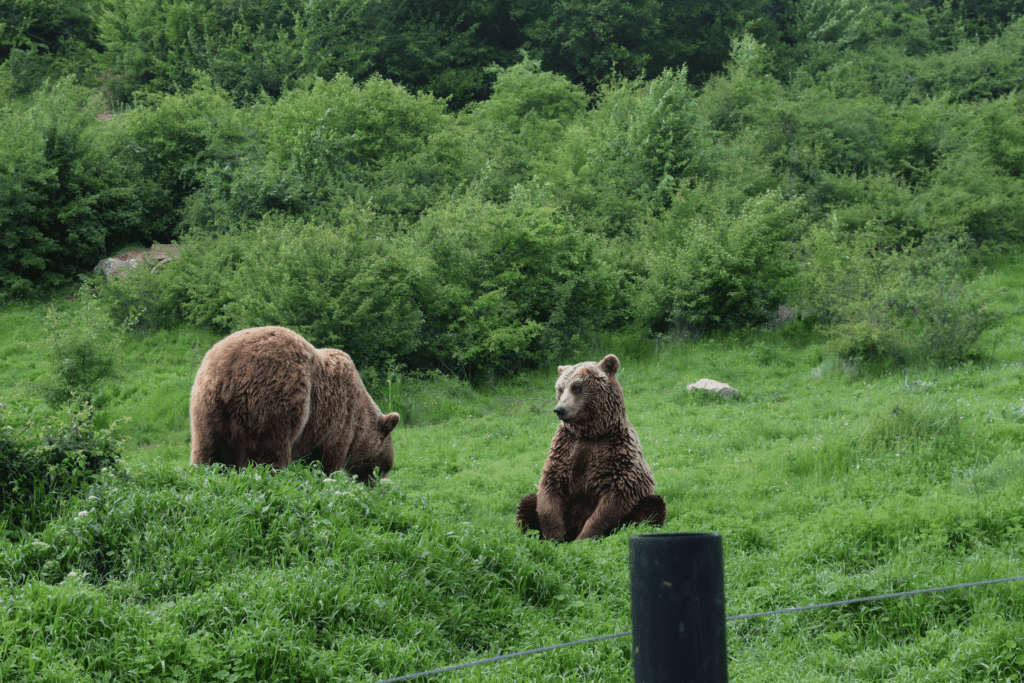
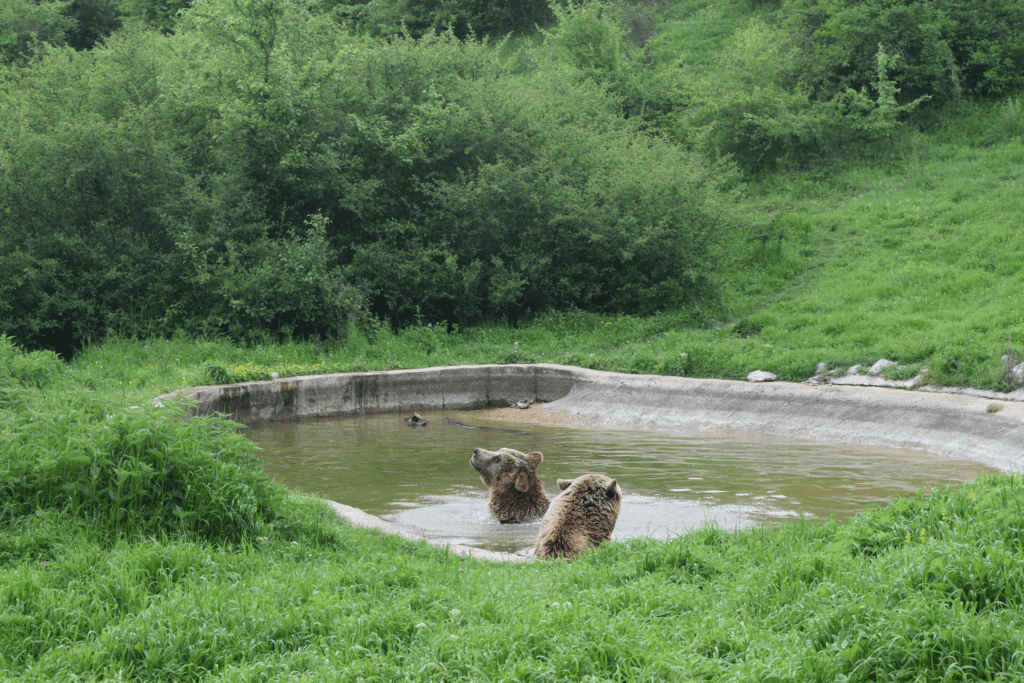
They have great signs in each area which tell you a little bit about each bear. They also have photographs of them when they were rescued and it’s heartwarming to see how well they look now. I have mixed opinions about zoos as I have been lucky enough to have been on a safari but I really enjoyed this. All credit to the organisers for saving these animals and creating such a beautiful space for them.
I thoroughly enjoyed my two days travelling around Kosovo. I visited at a quiet time of the year, where I saw very few tourists. Therefore I don’t know if the prices I got for the two taxis are typical or how expensive it would be in the high season. As I said in my previous post, while I loved Pristina and Kosovo, I don’t think this is a country every visitor will enjoy. If you like having a detailed itinerary this isn’t the place for you to visit. However, if you are flexible and don’t get upset when things don’t go to plan, you will probably love it. I wonder how much prices will change in the future as more tourists visit Kosovo.
I also hope you meet some great professional and helpful taxi drivers like I did. If you are open to teaming up with a fellow traveller, I certainly hope you get to spend time with someone as engaging as Oscar from Hong Kong !
Oscar had shared with me that when he travels, he sends himself and some close friends a postcard. I think this is a wonderful thing to do as I collect guide books when travelling. But I loved the fact that in todays modern World, Oscar has embraced his own personal tradition. The post office was closed the day we met in Pristina and I was delighted to be able to post Oscars cards on the following day for him. I really hope that they reach Hong Kong safely and that he has proof of his time in Pristina, Kosovo !!!

